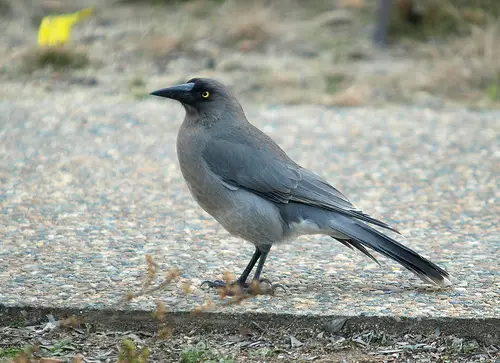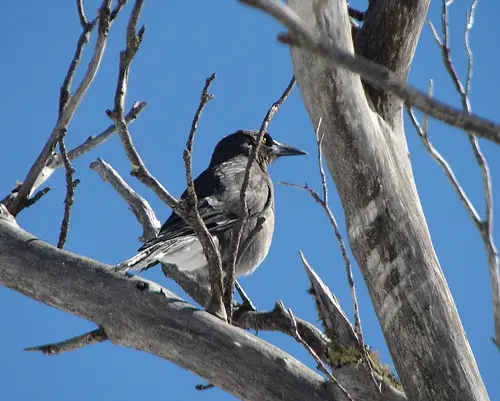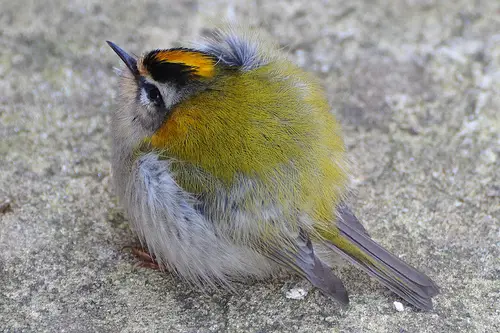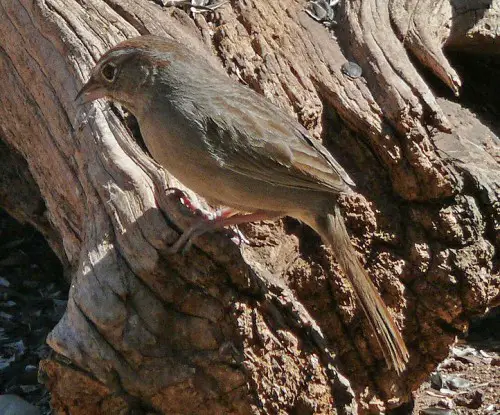Grey Currawong
The Grey Currawong is a native Australian bird that is in the genus Strepera. It is closely related to the Australian Magpie and the butcherbirds, which belong to the family Artamidae. It was first scientifically described in 1801 by John Latham, who called it the ‘Variable Crow’ as it has different colours. There are several Grey Currawong species living all over southern Australia.
An adult Grey Currawong is about 44 – 57 cm long, however most are about 52 cm. Its wingspan ranges from 72 to 85 cm, with an average of 78 cm. An adult weighs about 350 g. The Tasmanian Currawong weighs in heavier at 440g. Males are usually slightly longer than females, but they have similar weights and sizes.
As its name suggest, the nominate species of the Grey Currawong is a dark grey bird. It also has white marks in the wings and the tail. They have yellow eyes, and black legs and feet. Other subspecies are also grey, but they vary in colour such as slate-grey, black, or blackish-brown.
Grey Currawongs moult annually in either summer or spring. Young birds will only spend 1 year in their juvenile plumage before they mount into their adult plumage at 1 years old. In their juvenile plumage state, they are brownish. They also have a black bill which is yellow-tipped, and their gape is yellow. Their eyes are brown, but they will turn yellow around 4 months old.
The Grey Currawong’s preferred habitat varies between regions and subspecies. However, they are usually found in mallee scrubland, sclerophyll forests, farmland, and parks. They are also known to inhabit pine plantations. Tasmanian Grey Currawongs are found mostly in lowland dry sclerophyll forests, while the birds found in Western Australia prefer woodlands and forests such as Karri, Jarrah, Wandoo, Tuart, and paperback. Western Australian Grey Currawongs also prefer swampy areas, acacia shrublands that have plenty of wattle and mulga.
Unfortunately, since 1900’s, the Grey Currawong’s population has declined all across the board. It was very common in Victoria, however they became very rare in northern Victoria in the 1930’s and then in eastern Victoria in the 1960s. In south-eastern South Australia and the Wheatbelt region in Western Australia, the population of Grey Currawongs have declined due to habitat destruction. In Western Australia, they also became rare after the 1920s around Cape Naturaliste and Margaret River. In the 1940s, it vanished from the Swan Coastal Plain. Sightings around Sydney have been uncommon since the 19th century. The only place to buck this trend was in the 1960s at the Mount Lofty Ranges in South Australia. In the Northern Territory, this species is extinct. As a result of this population decline, this bird is categorised as being Critically Endangered.




